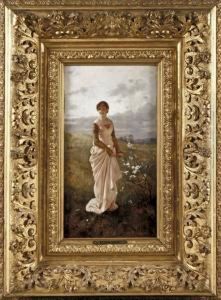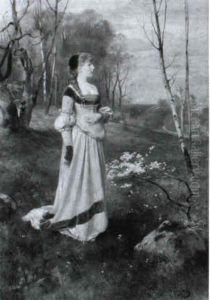Eduard Niczky Paintings
Eduard Niczky was a German painter and stage designer, known primarily for his work during the late 19th and early 20th centuries. Born on October 9, 1850, in Stettin, then part of the Kingdom of Prussia (now Szczecin, Poland), Niczky grew up during a time of significant cultural development in Germany.
As a young man, Niczky pursued his passion for art and was particularly drawn to the theater. He studied at the Academy of Arts in Berlin and demonstrated a strong aptitude for painting and design. His talents eventually led him to a career as a stage designer, where he became recognized for his elaborate and imaginative settings for operas, ballets, and plays.
Niczky's work was characterized by a meticulous attention to detail and a romantic style that was popular during the period. He had the ability to create grandiose and atmospheric scenes that enhanced the theatrical experience for audiences. His designs were not only aesthetically pleasing but also technically innovative, contributing to the evolving art of stagecraft at the turn of the century.
Throughout his career, Niczky worked at several prestigious theaters in Germany, including the Royal Opera House in Berlin. He collaborated with many prominent figures in the performing arts and left a lasting impact on the visual aspects of theater production during his time.
Eduard Niczky passed away on January 11, 1919, leaving behind a legacy as one of the notable stage designers of his era. Although he may not be widely known today, his contributions to the theatrical arts continue to be appreciated by historians and enthusiasts of 19th-century European culture.





















